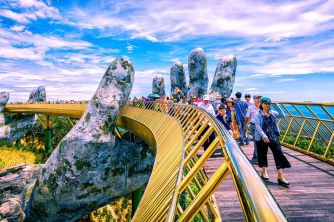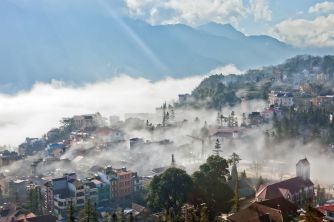On November 25, 2005, the Central Highlands Gong Culture of Vietnam was officially recognized by UNESCO as an intangible and oral cultural masterpiece of mankind. After the Hue Court Music, Tay Nguyen Gongs are Vietnam's second intangible cultural heritage honored as the world's heritage.
That affirms that Vietnam is a country with a long cultural tradition, many traditional arts that need to be preserved, preserved and promoted.
The Central Highlands gong culture space stretches across 5 provinces of Kon Tum, Gia Lai, Dak Lak, Dak Nong, Lam Dong and the owners of this unique culture are residents of the Central Highlands ethnic groups: Bana, Xe Dang. , Mnong, Coho, Rom, Ede, Giarai ... Gongs are intimately attached to the Central Highlands' life, are the voice of the spirit, human soul, to express joy and sadness in life. , in their work and in their daily lives.
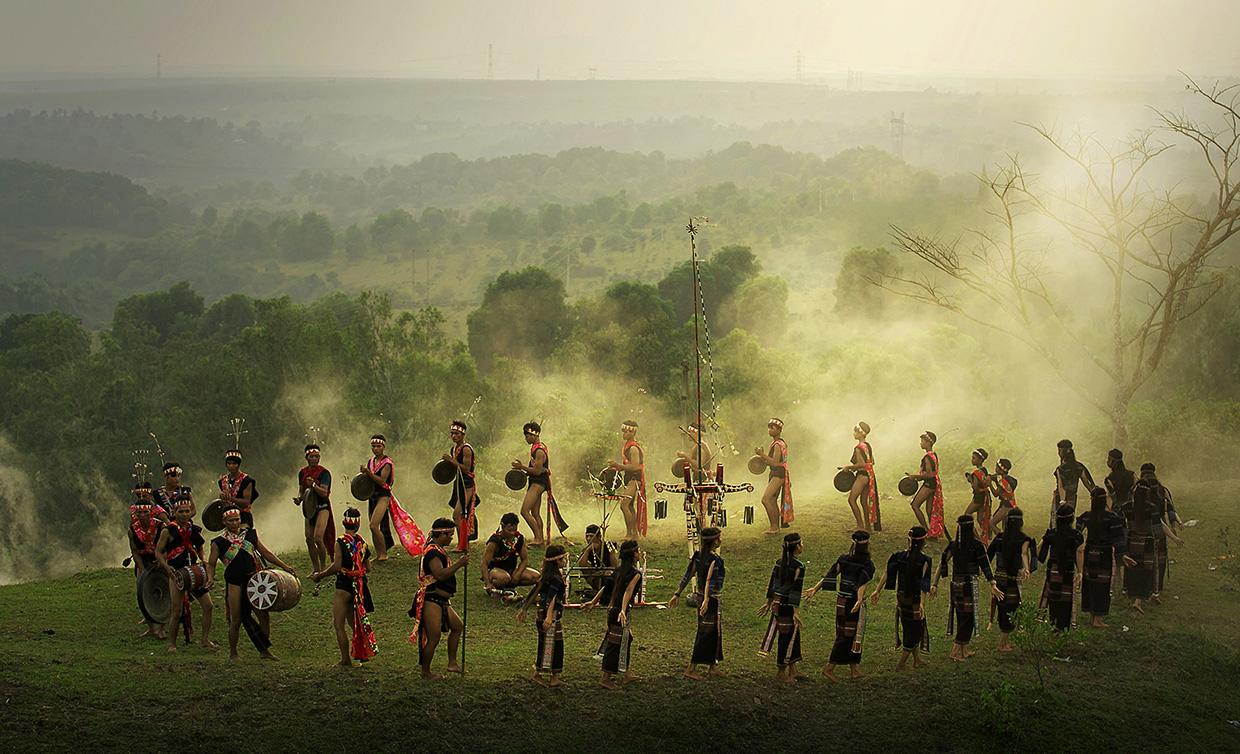
Gongs in the Central Highlands are derived from cultural traditions and long history. In terms of origins, some researchers believe that gongs are "descendants" of the rock group. Before the bronze culture, the ancients came to find stone instruments: stone gongs, stone gongs ... bamboo, then in the Bronze Age, only bronze gongs ... Since the early days, gongs were beaten. up to celebrate the new rice, down to the field; expression of belief - a means of communication with the supernatural ... the sound when humming deeply, when impulsing deep, blending with the sound of the stream, the wind and the sound of the human heart, living forever with the earth heaven and people in the Central Highlands.
All festivals in the year, from ear-blowing ceremony for babies to the ceremony to leave the graves, water trough worshiping ceremony, new rice celebration, warehouse closing ceremony, buffalo-stabbing ceremony ... or in a dry listening session ... must have gongs. The sound of the gong is longer than the human life, the sound of gong connects, connecting generations.
According to the concept of the Central Highlands people, behind each gong, there is a god. The older the gong, the higher the power of the god. Gong is also a valuable asset, symbol of power and wealth. There was a time when a gong was worth two elephants or 20 buffaloes. On festivals, the image of circles of people dancing around the sacred fire, beside the pot of wine in the sound of gongs echoes the mountains and forests, creating a romantic and fanciful space in the Central Highlands. Gong thus contributes to creating the romantic and majestic poets and poems of the Central Highlands culture.
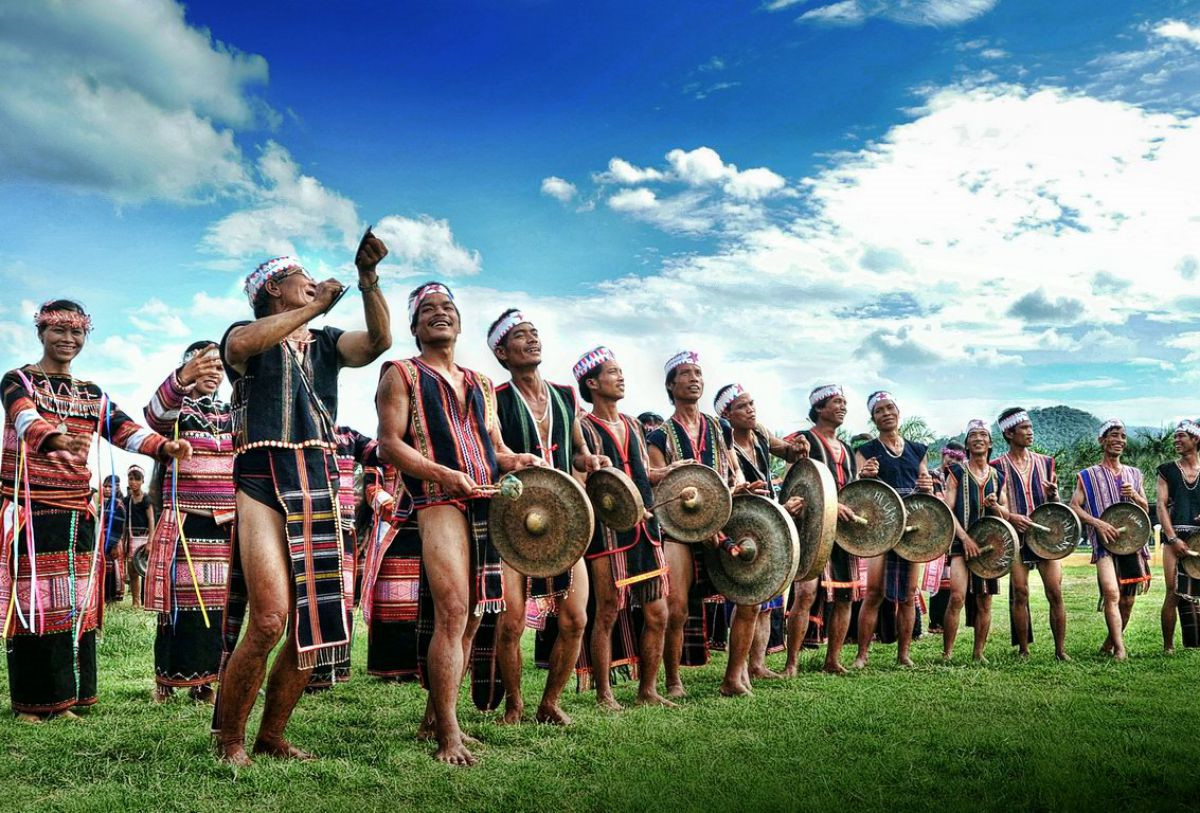
Gongs have entered the Central Highlands epic as to affirm the timelessness of this musical instrument: “Beat the most sound gongs, the gongs are the lowest. Hit gently to bring the wind to the ground. Beat for the sound of gong resonating far and wide across the country. Beat to let the sound of gong slip through the floor to spread away. Beat for the sound of gongs crossing the house to echo into the sky. Beat the monkey on the tree also forgot to cling to the branch until they had to fall to the ground. Fight for the devil engrossed in hearing forgetting to harm people. Beat the squirrel rats to forget to dig burrows, let the snakes lie still, startle the rabbits, let the deer listen and forget to eat grass, for all to listen to Dam San's gongs… ”.
Existing on the majestic Central Highlands land for thousands of generations, the art of gongs here has developed to a high level. Central Highlands gongs are very diverse and plentiful.
Currently, in most of the villages in the Central Highlands, there are groups of gongs to serve the people in community activities, in the summer festival. On Tet holiday, the familiar image beside the sacred fire, the circles of people passionately dancing and singing in the sound of gongs resounding in the mountains and forests '' appeared all over the villages. Folk artists perform gongs in harmony with each other, creating music pieces with rich rhythm and harmony, with their own nuances with numerous levels.
Each ethnic group has its own gong songs to express the natural beauty, human aspirations ... Giarai people have the songs of Juan, Trum ... The Bana people have gong songs: Xa Trang, Sakapo, Atau, Toi ... The sound of gongs is also a substance that attracts girls and boys into the exciting dances of the whole community in village festivals. This is the most prominent folklore activity in many ethnic groups in the Central Highlands.
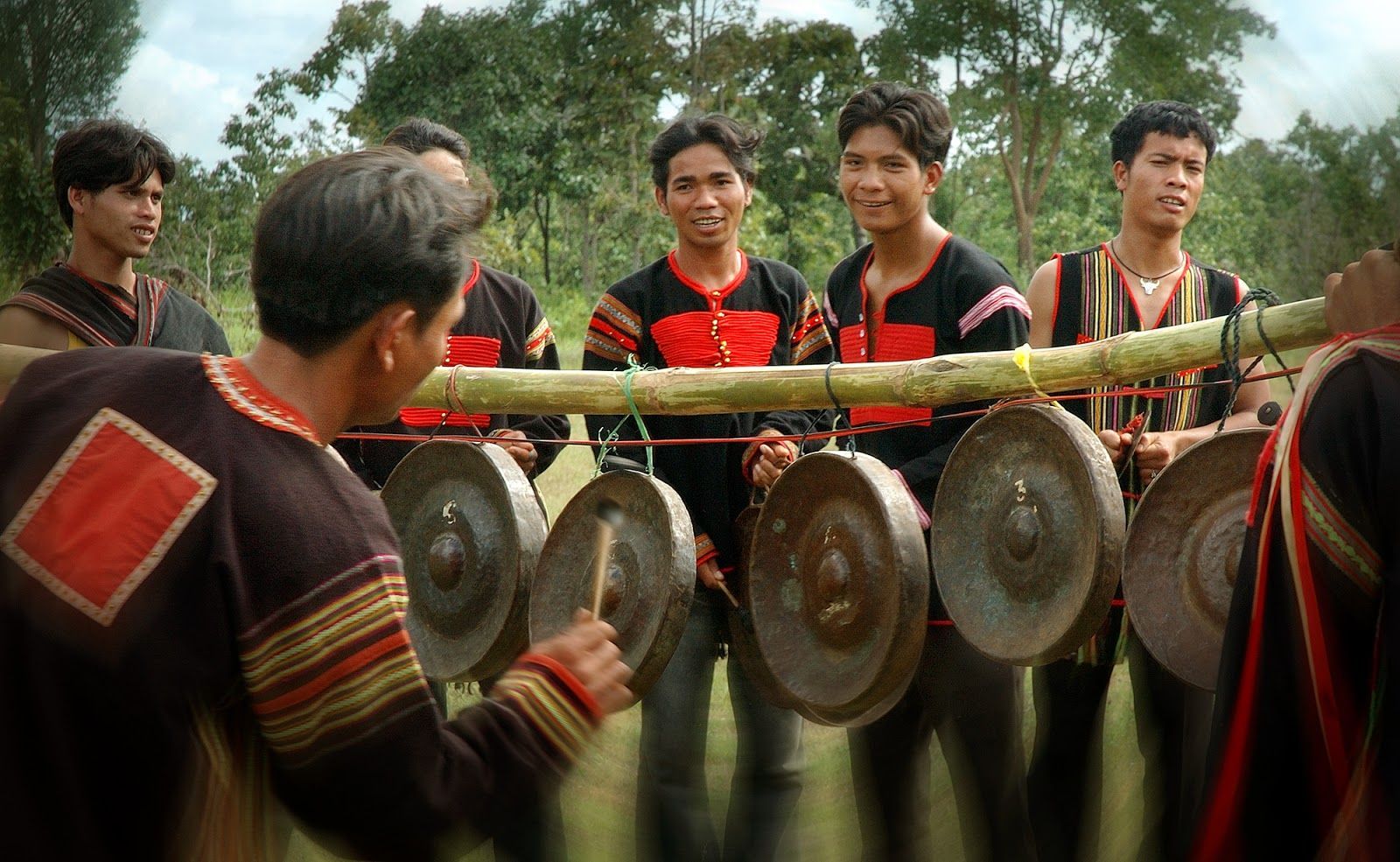
The music of Tay Nguyen gong demonstrates the player's proficiency in applying skills to beat gong and manipulation skills. From adjusting gongs to orchestral staff, playing style, performing, even people who did not go to school and training classes still showed great skillful plays. For the Central Highlands people, gongs and gong culture are invaluable assets. The music of Tay Nguyen gongs is not only an artistic value which has been affirmed for a long time in social life, but also the crystallization of the spirit of rivers and mountains through generations. The Central Highlands gong not only has material meaning as well as simple artistic values, but it is also a "voice" of people and gods according to the concept of "all living beings".
Each set of gongs is the spiritual voice and soul of the Central Highlands people, to express the joys and sorrows in their working life and daily activities. Ethnic groups in the Central Highlands use gongs in their own way to play their own songs. Over the years, gongs have become a typical cultural feature, full of charm. Gong is the life of the Central Highlands people. Listening to the gongs, you can see the hunting space, farming space, festival space ... Central Highlands.
Each ethnic group, each region has its own characteristics of gongs. The gong can be used alone, or in sets, in sets of 2 to 12, also in sets of 18 to 20 like the Giarai set. The Central Highlands gong set is organized as an orchestra that can perform polyphonic music with different forms of harmony. Especially in this orchestra, each person only plays one gong, or gong (gong is the type with knob, gong without knob).
In the ceremony to announce the Central Highlands Gong Culture, which is an intangible cultural masterpiece of humanity, Mr. Koichiro Matsuura - General Director of UNESCO said: “I have been able to enjoy the very unique Vietnamese style of gong music. Nam and also see very unique musical instruments in the gong orchestra of the Central Highlands ethnic groups. This is a very unique traditional culture of Vietnam, very wonderful and unique. The work of the Worker title of the masterpiece of the intangible cultural heritage and the oral tradition of mankind for the Central Highlands Gong Culture is very worthy ”.


